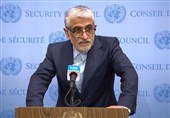What We Should to Know about Current Financial Crisis
TEHRAN (Tasnim) – California’s Silicon Valley Bank (SVB) collapse has triggered a domino of economic crises across the globe.
The collapse instigated fears that it would be a new milestone for another global banking crisis, as major Western countries’ central banks started to find a convincing answer to the question of how they can harness an uncontrollable financial crisis while preserving the current financial stability.
The global banking system has been reeling from a series of shocks over the past week, prompted by the collapse of California’s Silicon Valley Bank. That has stoked fears that this is the start of another banking crisis, posing big questions for central banks as they try to fight inflation while ensuring financial stability, The Guardian reported.
Last week started with the appearance of some serious strains and worries for the international financial system. Last Friday’s SVB bankruptcy was followed by the failure of the New York Signature Bank on Sunday. Inserting $30 billion into the First Republic Bank of the US was the first initiative taken by the biggest lenders of the Wall Street to rescue it. On the other side of the Atlantic Ocean, it was the Swiss National Bank that felt it had no choice but to provide more than $53 billion lifeline to the Credit Suisse. Although both SVB and Credit Suisse suffered from specific problems, the trace of some more general disorders can be diagnosed in this crisis.
There is a routine in the United States’ financial system where the Federal Reserve, the US’s Central Bank, provides a report explaining about the emergency aids provided to the American banks across the past seven days.
Although it is too early to say anything about the reperat of the world financial crisis of 2008, there are hopeful signs that can prevent a similar one. First, today banks enjoy a much better financial status than they had in 2008.
Second, central banks of both sides of the Atlantic Ocean have devised lines of credit set up to circumvent problems of banks suffering from cashflow problems.
What is clear-cut now is that both banks and other financial institutions are entangling with serious losses. A key lesson learned from 2008 is that confidence can disappear more quickly than it would appear.
Why Banks Suffer from Losses?
There were two ways for the central banks to respond to the Global Financial Crisis (GFC): they cut down the interest rate and using a process known as Quantitative Easing (QE), they started to inject money into the banking system. Actually, the central banks directed the cash gained from selling bonds issued by the governments into their economy. Again, when the global Coronavirus pandemic started, another round of interest rate cuts occurred and QE was forced.
As a result of inflation rising, central banks were enforced to reserve the abovementioned course. So, they increased the interest rates and began to sell bonds. QE programs increased the bond prices, but the unwound QE made it to decline once more time. This aggressive measure of the central banks has brought about the big and unexpected losses for the commercial banks; because, SVB had invested heavily in the bonds issued by the US government, but as rates rose considerably, the value of its bond prices automatically declined. Thus, when the SVB customers started to withdraw their cash, SVB found itself in a condition that had no choice but to sell its bonds at a heavy loss which was followed by a big hole in its balance sheet.
What We Need to Expect?
Central banks are in a dilemma, because their two main functions i.e. keeping the inflation low and maintaining the financial stability, are contradicted here. Both raising the interest rates and reversing QE are designed to slow the growth and inflation down, but it seems that some banks would fail to get rid of this rough condition easily.
Seemingly, interest rates will rise in a short time and at a lowest level than they did before the crisis experienced by SVB and financial markets are waiting now to see what decisions on the interest rate the Federal Reserve and European banks would make the next week. As it seems, the risks of recession have peaked eye-catchingly during the past week.






